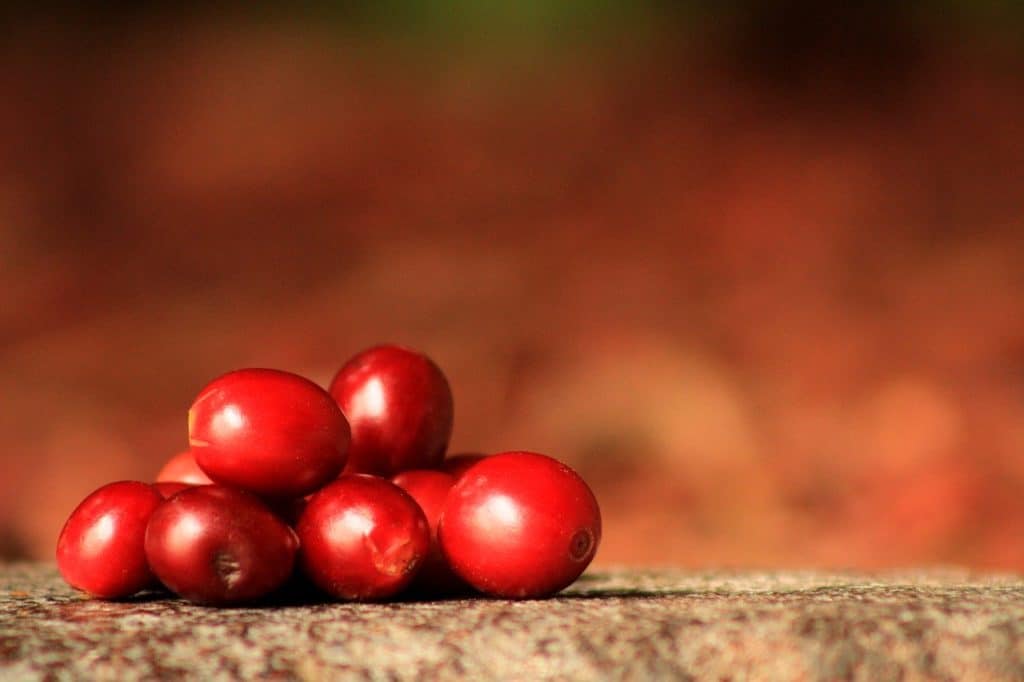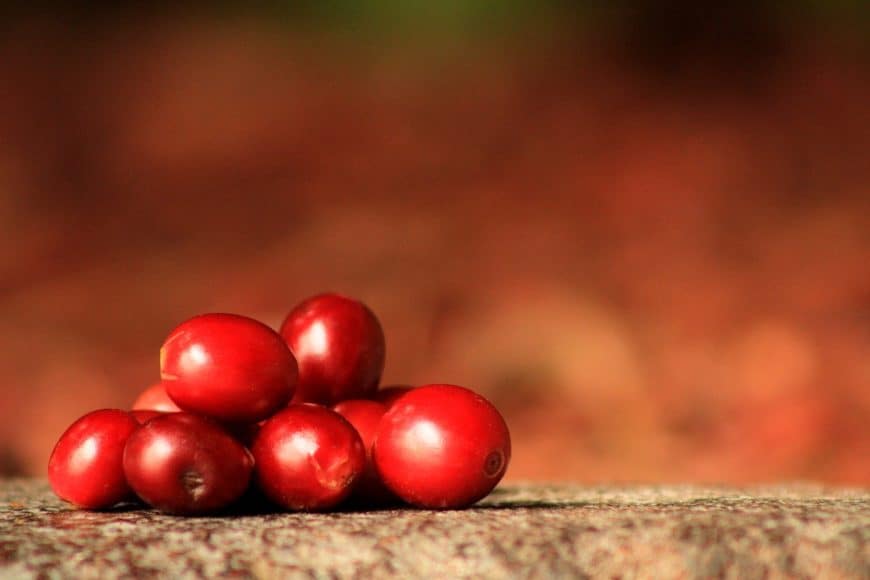
With its intense, rich flavor, peaberry coffee is a sensory treat that stands apart from the everyday brew. Unlike traditional coffee beans, which grow in pairs inside a coffee cherry, peaberry beans develop solo, forming a round, pea-like shape that gives them their name. This quirky trait packs each bean with a bold depth of flavor and aroma, making them a darling of coffee aficionados and curious sippers alike.
I’ve delved into the world of this unique bean to bring you a beginner-friendly guide that’s perfect for anyone eager to explore its allure. From its origins to its taste, cost, and the debate around its worth, here’s everything you need to know about peaberry coffee—and whether it deserves a spot in your cup.
What Sets Peaberry Coffee Apart?
Peaberry coffee isn’t just another bean in the bag—it’s a natural standout. Inside a typical coffee cherry, two seeds grow side by side, flattening against each other like bookends. But in about 5-10% of cherries, a mutation leaves just one seed fertilized. That lone bean, free from a twin, rounds out into a peaberry, absorbing all the cherry’s goodness for itself. The result? A concentrated burst of flavor and aroma that’s hard to ignore.
This solo act delivers a complex taste profile—imagine a sip that weaves together fruity brightness, floral whispers, and hints of chocolate or toasted nuts, all wrapped in a smooth, velvety finish. Unlike some coffees that bite with bitterness, peaberry tends to play nice, offering balance that feels effortless. Its rarity adds to the appeal: with only a small fraction of global coffee production yielding peaberries, it’s a treasure worth seeking.
The name itself is a nod to its shape. “Peaberry” evokes the bean’s pea-like form, while in Spanish-speaking regions, it’s called “caracol”—snail—for its roasted resemblance to a tiny coiled shell. There’s no way to predict this mutation in the field, and no tech can force it. After harvest, peaberries are painstakingly hand-sorted from regular beans, a labor-intensive step that nudges up their price. Add in their reputation for exceptional taste, and you’ve got a bean that’s as exclusive as it is intriguing.
Peaberry’s roots span the globe. Whether it’s an Arabica plant swaying in the Colombian highlands or a hearty Robusta thriving in Vietnam, the mutation pops up across varieties and regions. Open a bag of supermarket coffee, and you might spot a few peaberries hiding among the flat beans—not enough for a full pot, but a subtle hint of their universal presence. For purists, though, only a dedicated batch of hand-picked peaberries will do, making it a craft worth the effort.
Tasting Peaberry: Sweet Hype or Subtle Magic?
So, what does peaberry coffee actually taste like? Ask around, and sweeter is the word you’ll hear most. Picture this: a warm mug where the usual sharp edges of coffee soften into a bright, fruity lift—think ripe berries or a citrus kiss—layered with a chocolatey depth and a nutty encore. It’s not just the flavors; it’s the texture too—a silky smoothness that sidesteps bitterness, leaving your palate refreshed rather than rattled. That’s peaberry at its peak, a cup that feels like a quiet luxury.
Why the sweetness? One theory floats around coffee circles: with no sibling to share the cherry, the peaberry soaks up extra sugars and nutrients, amplifying its taste. There’s no lab report to back this up, but it makes intuitive sense—more room, more richness. Roasters swear by its higher caffeine kick too, thanks to that concentrated growth. Brew it right, and it’s a morning jolt with a dessert-like twist.
Yet not everyone’s convinced. Some coffee pros taste no difference, chalking it up to variables beyond the bean—roast level, grind size, water temp, even the mug you sip from. Others point to a placebo effect: peaberry’s marketed as premium, so we expect it to dazzle. Blind taste tests have muddied the waters further, with some drinkers raving and others shrugging. It’s a reminder that coffee’s as personal as it gets—8 billion tongues, 8 billion verdicts.
Brewing peaberry can tilt the scales. Its round shape roasts more evenly than flat beans, unlocking consistent flavor with every batch. A medium roast is the sweet spot for most, balancing the bean’s natural notes without overpowering them. Go light to savor its nuance; go dark, and the roast takes over, masking what makes peaberry special. Try a pour-over with a medium grind to let its character shine—slow and steady wins the flavor race here.
The Craft and Cost of Peaberry Coffee
Peaberry’s journey from cherry to cup is a labor of love. After harvest, there’s no machine to spot these oddballs in a sea of regular beans. Instead, workers sift through massive batches by hand, plucking out the 5-10% that qualify. It’s tedious work—imagine sorting marbles from pebbles in a giant pile—and that’s just the start. Roasting adds another layer: peaberry’s shape demands its own heat and airflow tweaks, so it’s never blended with flat beans. Small test roasts fine-tune the process, ensuring each bean hits its peak.
That effort shows in the price. A bag of peaberry coffee can run $30 to $50, depending on the source, far more than your average blend. Part of it’s the manpower; part of it’s the mystique. Companies lean into the “exotic” label, pitching it as a premium indulgence for discerning drinkers. Roasters and cafes play up its rarity too, turning a natural quirk into a status symbol. For some, it’s a fair trade for a standout brew. For others, it’s a steep ask for a subtle shift.
Quality varies too. A top-tier peaberry from, say, Tanzania’s volcanic slopes might outshine a generic batch, just as terroir shapes any coffee. But without pedigree, you’re betting on the bean’s inherent charm—and your own taste buds—to justify the splurge. It’s less about nutrition (no proof there) and more about experience. If it sings to you, it’s gold. If it doesn’t, it’s just coffee with a fancier bill.
Is Peaberry Worth It? You Decide
Here’s the million-dollar question: does peaberry live up to its hype? It’s tricky. Taste is a wild card—some swear by its sweet aroma and vibrant kick, happily shelling out for the privilege. Picture a coffee geek waxing poetic over a floral finish, or a newbie grinning at a smoother morning fix. For them, peaberry’s a revelation, a tiny bean that punches above its weight.
Others sip and shrug. The difference can be whisper-thin, especially if you’re not tuned into coffee’s subtleties. A dark roast or sloppy brew can bury its magic, and years of chugging basic blends might dull the contrast. Then there’s the skeptic’s take: it’s all marketing, a clever tale spun to sell a pricier bag. Fair points—coffee’s a craft of countless variables, and perception’s half the game.
The only way to settle it? Try it yourself. A whole bag might feel like a leap—$50 for a maybe?—so start small. Hit a café that brews peaberry (call ahead; not all do) and order a cup. Or borrow a sip from a friend who’s already hooked. Tinker with it at home if you can—grind it fresh, brew it slow, sip it black. Love what you taste? Snag a batch from a local roaster (check availability) or online haunts like Amazon. Not feeling it? No sweat—your trusty regular joe’s still got your back.
Peaberry’s a gamble with a personal payout. It’s not about right or wrong—it’s about what wakes up your senses. So, have you tried it yet? Drop your thoughts below; I’d love to hear where you land.

